|
Alphabetical List |
|
|
|
|
|
|
|
County List and Topics |
|
|
|
Please sign my Guestbook and leave feedback |
|
|
||||||||||||||||||||||
|
a real barn of a chancel - was rebuilt by Sir Thomas de Astley. Later the nave was raised and a clerestory added. The Perpendicular period left Crick pretty well untouched before the added. And so it goes on. What we have left is a predominantly Decorated period church before The Victorians stepped in with their usual program of restoration and “modernisation”. Crick’s Norman font is pretty well unique. Its bowl is decorated with three rows of circular motifs. At the rim it has a zig zag moulding executed with a certain amount of geometric skill that is lacking on many Norman fonts. It is supported on three monster figures. their backs bent with the strain. The motif of evil monsters bent to the service of God is a very popular device in Italy. Crick is not one of the spectacular Norman fonts - see others by clicking here - but in many ways it embodies the joy of Norman fonts: essentially most are what we would today call in e-bay speak “One of a Kind”. There are some distinctive styles, such as those produced by the Herefordshire School (see Eardisley for a wonderful example) and there are some distinctive themes such as Christ and the Apostles (such as Coleshill), but most seem to have come straight from the imaginations of the individual carvers. And here many of them sit 1000 years later admired and cherished, having been at the centre of village life for generation after generation. That, dear reader, is what you call “leaving your mark on the world”! The font is not all that sets Crick apart, however. When the chancel was rebuilt during the Decorated period it was embellished internally with some very exuberant carvings at the ends of the window arches - window “stops” to be more technical . The nave roof corbels have further carvings. There is nothing restrained about these carvings: they are large and brash with a strong sense of mischief! |
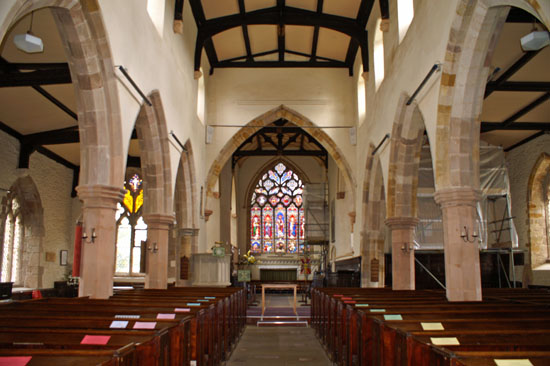 |
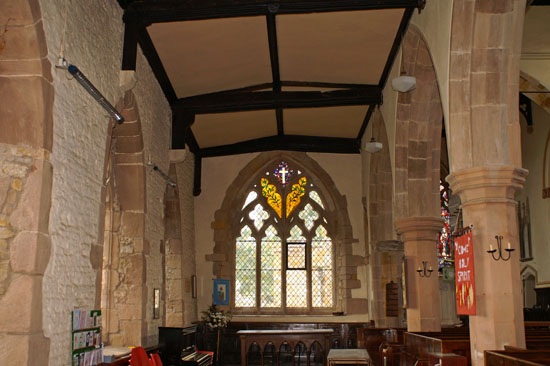 |
||||
|
Left: With its whitewashed walls, clerestory and large aisle windows, Crick church is almost startlingly light - even on such a grey day as this. Right: The north aisle with its decorated east window. |
|||||
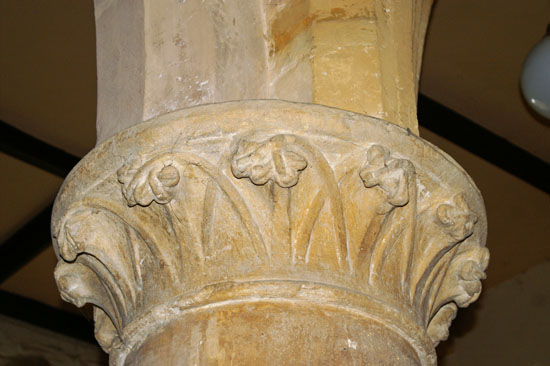 |
|||||
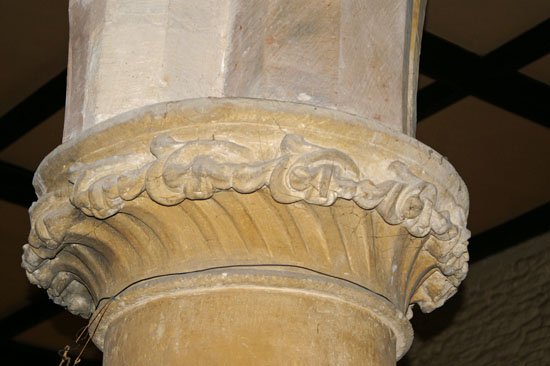 |
|||||
|
Left and Right: The Early English “stiff leaf” capitals on two of the columns of the south aisle. As can be seen when comparing these with the pictures above, the Decorated and Perpendicular periods brought a rather tedious uniformity to columns and capitals. The saving grace for the Decorated period was that it also saw a revival of flamboyant frieze and corbel carving that had almost disappeared during the Early English period, although this was by no means ubiquitous. Window tracery also reached its pinnacle during this period before the near- industrialisation of window production during the post-Plague Perpendicular period. |
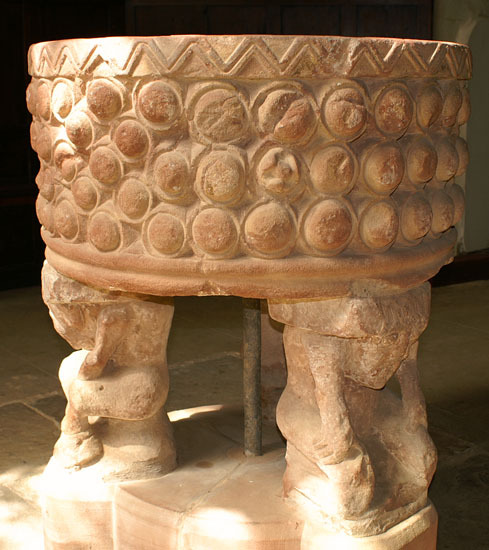 |
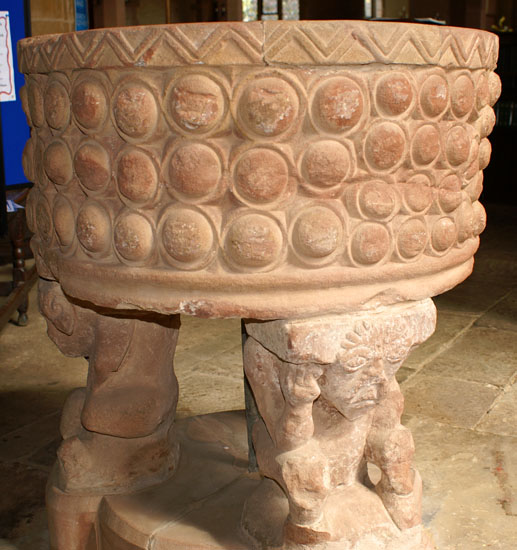 |
||||||||
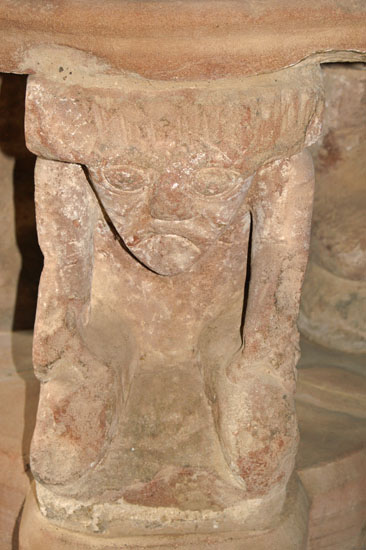 |
|||||||||
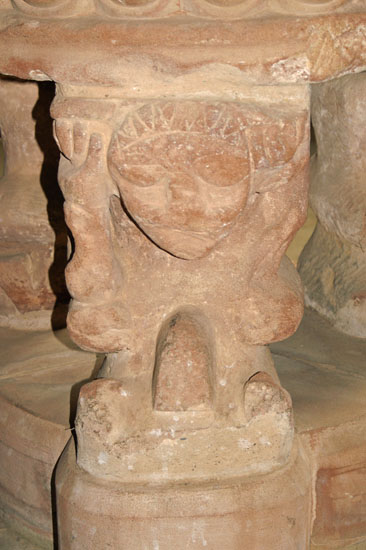 |
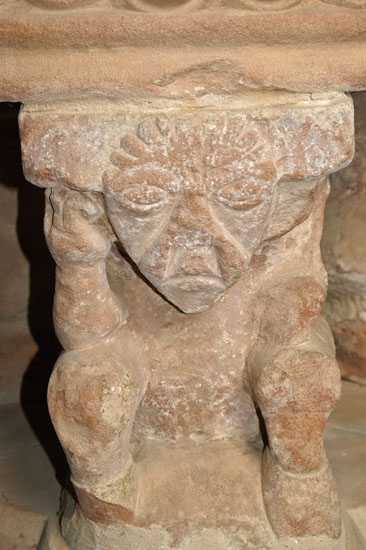 |
||||||||
|
The Norman font with its peculiar and probably unique circles motifs and grotesque figures supporting it. |
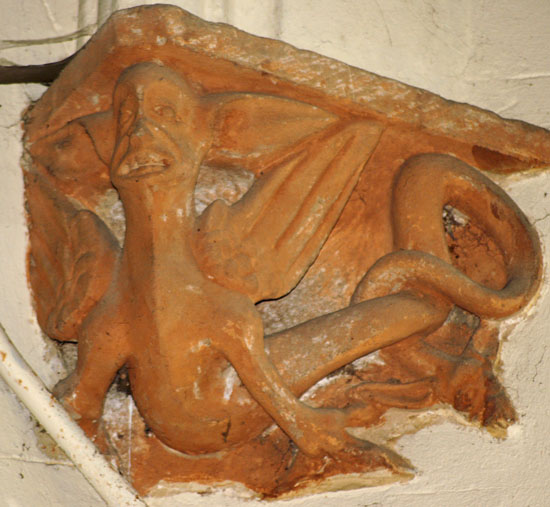 |
|||||||
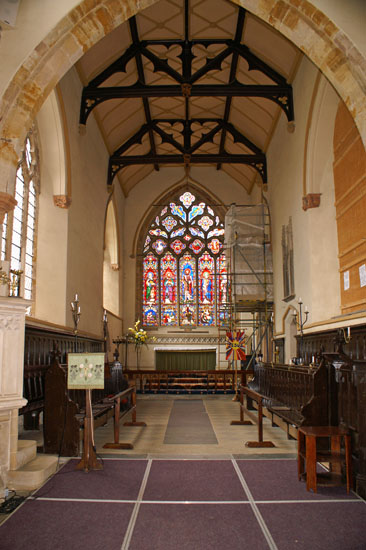 |
|||||||
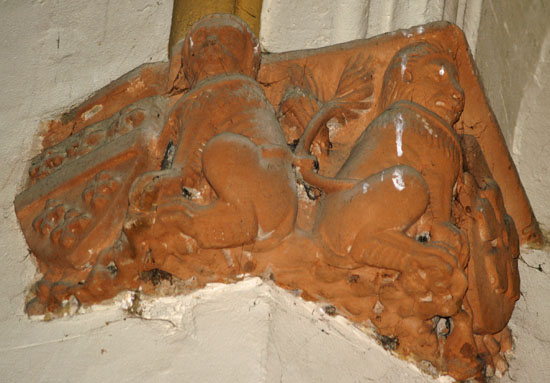 |
|||||||
|
The chancel with its lovely Decorated east window. Note the window arch stops to the left and right of this picture. |
|||||||
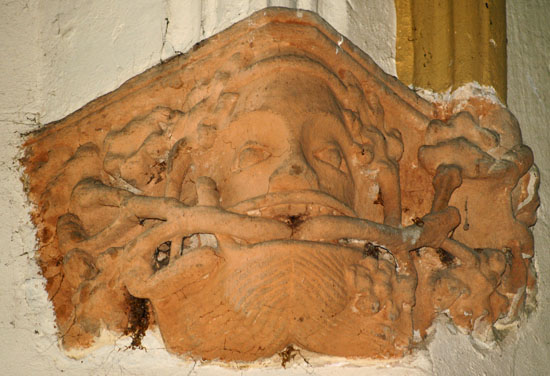 |
|||||||
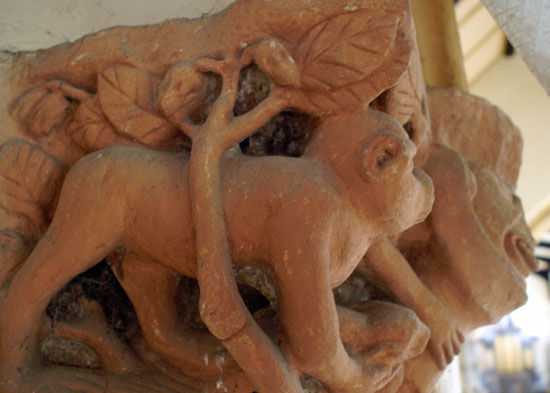 |
|||||||
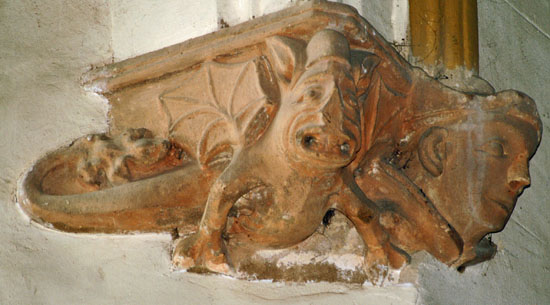 |
|||||||
|
Some of the superb chancel carvings. Top left is a spectacular Green Man. The lions (right middle) are juxtaposed with the arms of (left) the Beauchamp (pron, “Beecham”) and (right) the Astley families. This refers to the links between the families established by the marriage in 1325 of Sir Thomas de Astley, who was responsible for many of the c14 alterations to this church, to Elizabeth Beauchamp daughter of the Earl of Warwick. 100 years later the Earldom was held by Richard Neville, famous as the “Kingmaker” in the Wars of the Roses (one might more accurately describe him as the “Perpetual Turncoat” perhaps....!). The monkey or ape (right, bottom) was believed to embody the desires and lusts of a man without the self-restraint. Because of scaffolding within the chancel I was unable to see what creature is next to him. The dragons are particularly ferocious! |
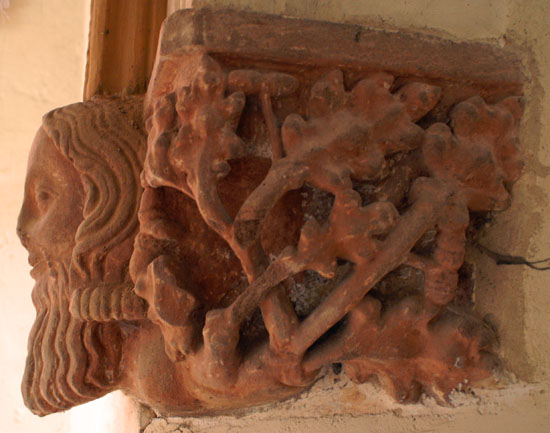 |
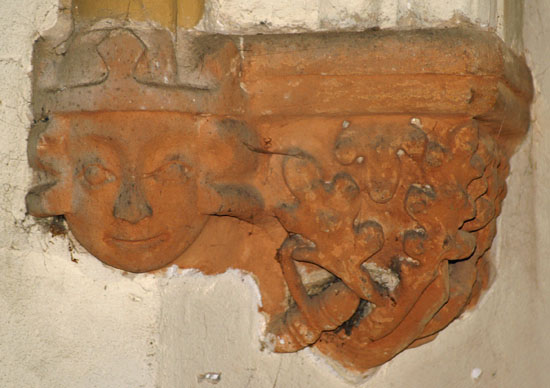 |
||||
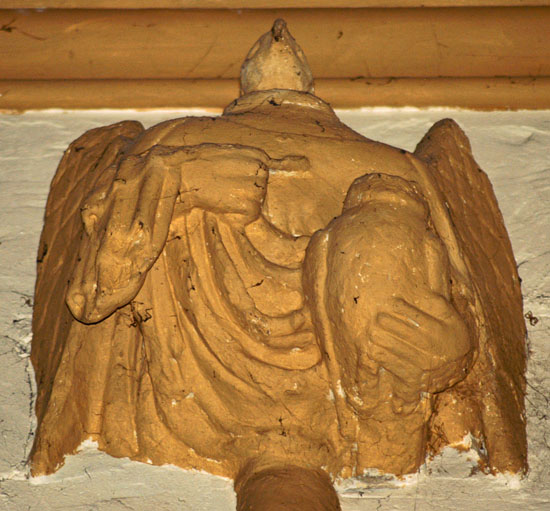 |
|||||
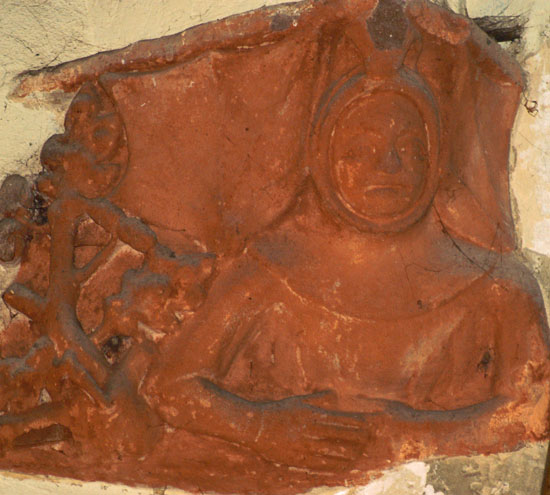 |
|||||
|
More chancel carvings. The figure bottom right is intriguing. It is above one of the chancel windows. The image is apparently of an angel. The hands are human but the head seems to be bird-like. The hands seem to be holding a bird of prey. Can anyone explain this imagery? |
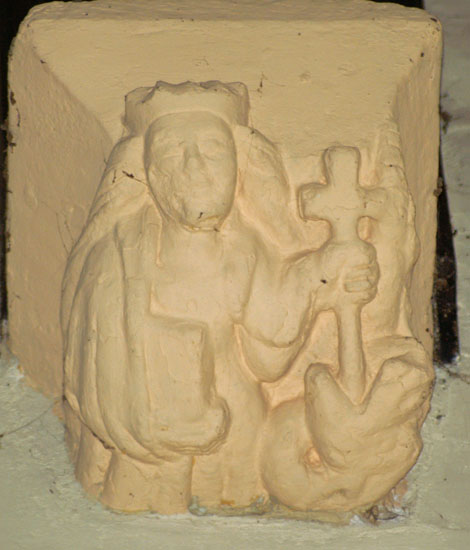 |
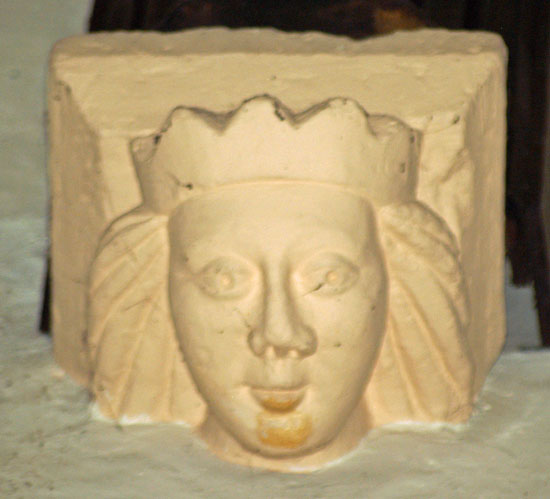 |
|||||||||||||
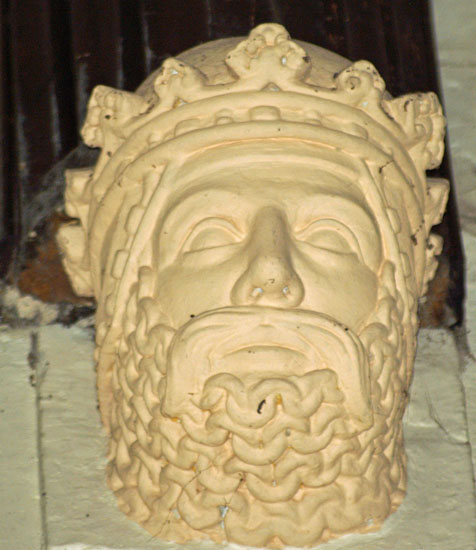 |
||||||||||||||
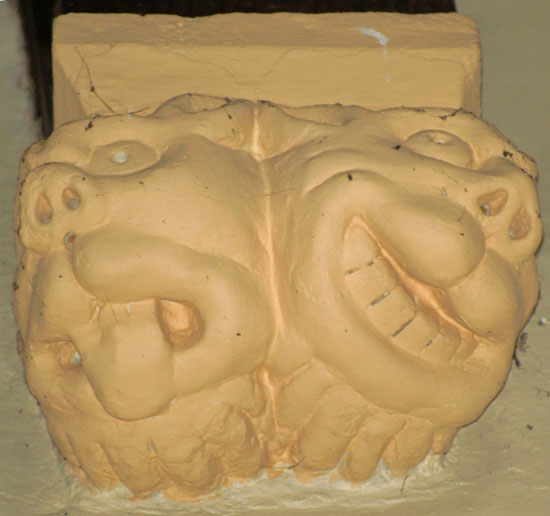 |
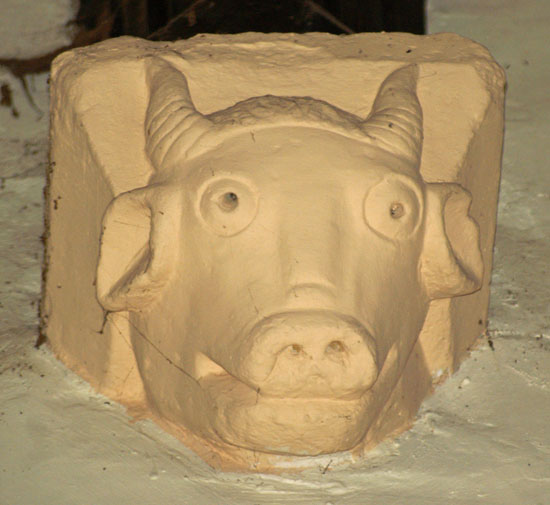 |
|||||||||||||
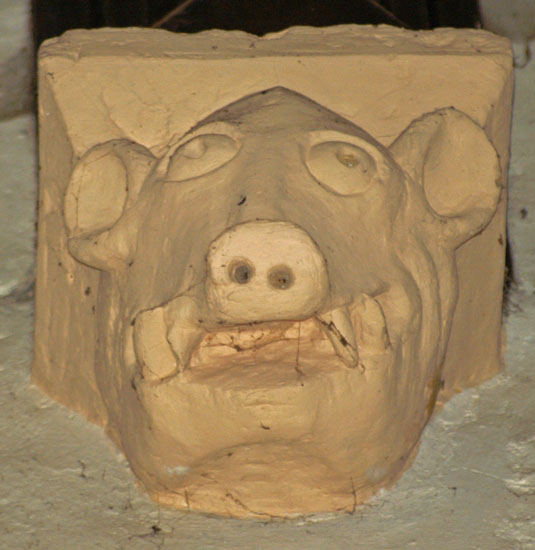 |
||||||||||||||
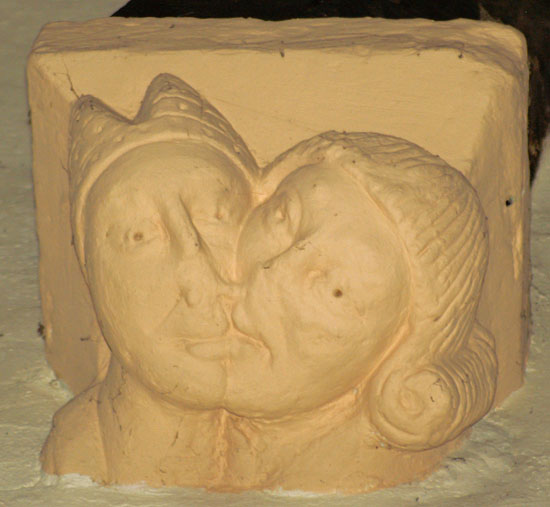 |
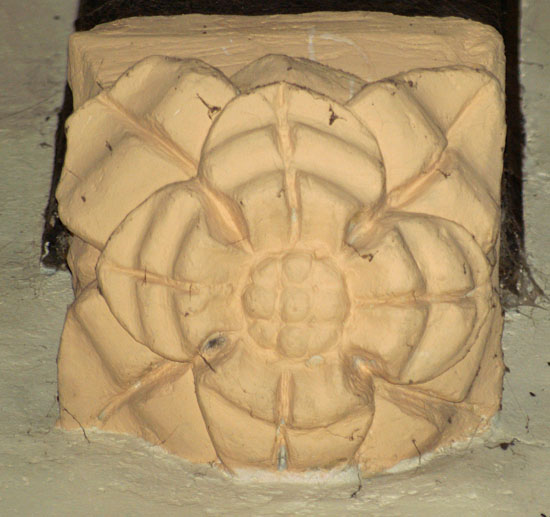 |
|||||||||||||
|
A selection of corbels. Top left is an image of St Margaret of Antioch to whom this church is dedicated. Note that her cross is in the mouth of a beast. This refers to the legend that she refused the hand in marriage of a “heathen” official. He imprisoned her and the devil visited her in her prison in the guise of a dragon. Her cross choked the beast. Antioch being a Crusader city (in modern-day Turkey) perpetually under threat from the Mongols, Muslims and Mamelukes, this would have been an appealing allegory. Most extraordinary in my view, however, is the image bottom left which is an image of what appears to be a very passionate kiss indeed! |
 |
||
 |
||
|
Finally, Crick has a frieze arounds its chancel. This is not unusual in the East Midlands during the Decorated and early Perpendicular periods. Crick’s is a quite modest one, however. See contemporary and magnificent examples at Bloxham and Adderbury in Oxfordshire. |
||
